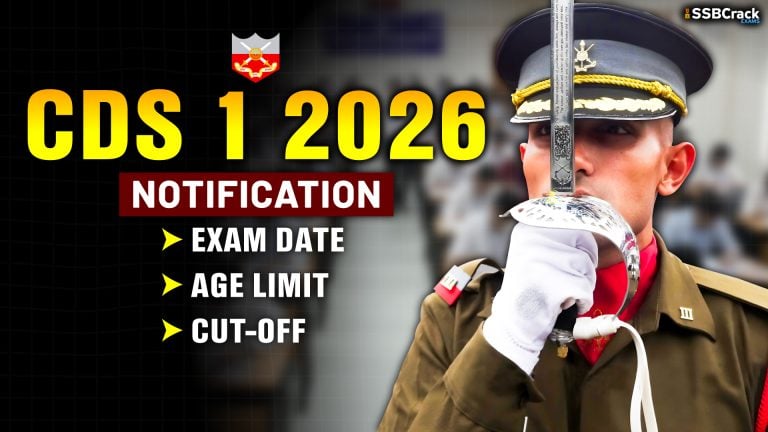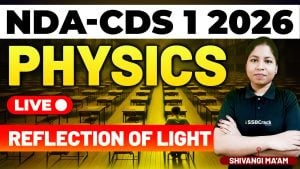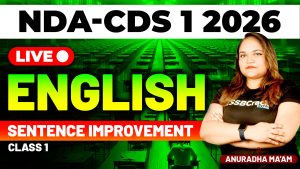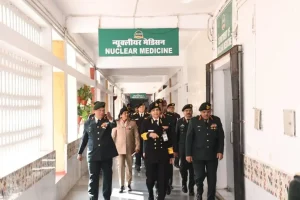Geometry is an essential topic for the Combined Defence Services (CDS) Exam, covering a broad range of topics from polygons to triangles, quadrilaterals, and various theorems. A recent class on Geometry focused on fundamental and advanced concepts crucial for solving geometry problems in CDS. This blog will discuss the topics covered in the class, along with strategies that will help you effectively prepare for Geometry in CDS Maths. With clear understanding and consistent practice, you can master Geometry and score high on the exam.
Key Concepts Discussed
Polygons: Interior and Exterior Angles
- Polygons are closed shapes with three or more sides, and understanding their angle properties is essential for solving geometry problems. Each polygon has a set of interior and exterior angles.
- Familiarizing yourself with these angle properties can help you solve problems involving both regular and irregular polygons, especially in questions where angle relationships need to be deduced quickly.
Triangles: Sides and Angles
- Triangles are one of the most fundamental shapes in geometry. Key types include equilateral, isosceles, and scalene triangles, each with unique side and angle properties.
- The sum of a triangle’s internal angles, the relationships between its sides, and the significance of specific types (right, obtuse, and acute) form the foundation for advanced concepts like similarity and congruence of triangles.
Basic Proportionality Theorem
- Also known as Thales’ Theorem, this is a fundamental theorem in geometry, particularly when studying similar triangles. According to this theorem, a line drawn parallel to one side of a triangle divides the other two sides proportionally.
- Understanding the theorem’s application can simplify many complex problems, especially those involving ratios within triangles. Practicing problems using this theorem helps make it second nature for exam scenarios.
Median and Centroid
- A median is a line segment joining a vertex to the midpoint of the opposite side in a triangle, and it always intersects at the centroid, which is the triangle’s balance point.
- Knowing how to find the centroid and understanding its properties can be useful in problems that involve center points, balance, or intersecting lines within a triangle.
Altitude and Orthocenter
- An altitude of a triangle is a perpendicular line from a vertex to the opposite side. All altitudes of a triangle intersect at a point known as the orthocenter.
- Problems involving perpendicularity or height within triangles often rely on an understanding of altitude and orthocenter, making it important to practice these concepts.
Incircle and Circumcircle
- Incircle is the largest circle that can fit within a triangle, touching all three sides. The center of this circle is known as the incenter.
- Circumcircle is a circle that passes through all three vertices of a triangle, with its center known as the circumcenter.
- Recognizing the relationship between these circles and the triangle’s vertices and sides can simplify certain geometry problems, especially those requiring the calculation of distances or radii.
Congruence and Similarity of Triangles
- Triangles can be congruent if they have identical shapes and sizes, while they are similar if they have the same shape but possibly different sizes. These properties are essential for solving many triangle-based problems in geometry.
- Familiarizing yourself with criteria like SSS, SAS, ASA, and RHS for congruence and AA, SAS, and SSS for similarity helps in quickly identifying relationships between triangles, a common requirement in exam questions.
Quadrilaterals
- Quadrilaterals are four-sided polygons and include rectangles, squares, parallelograms, rhombuses, and trapezoids. Each type has unique properties regarding side lengths, angles, diagonals, and symmetry.
- Understanding these properties can make it easier to solve problems involving area, perimeter, or angle measures within quadrilaterals. Quadrilaterals are commonly tested in geometry sections, and practicing with their properties ensures you are well-prepared.
Effective Preparation Strategies for Geometry in CDS Exam
Focus on Understanding Basic Properties and Definitions
- Ensure you have a strong grasp of the basic definitions, properties, and characteristics of geometric shapes. This foundational knowledge will help you understand more complex theorems and properties, making problem-solving more intuitive.
- Create summary notes that list each shape’s properties, including sides, angles, and any unique relationships, to make revision faster and more effective.
Memorize Key Theorems and Conditions
- Certain theorems, such as the Basic Proportionality Theorem, triangle similarity and congruence criteria, and angle properties of polygons, are critical for quick problem-solving. Memorize these and practice applying them in different types of questions.
- Use flashcards or mnemonic devices to remember the criteria for congruence and similarity, as these are frequently used in CDS questions.
Practice Diagrams for Better Visualization
- When studying geometric properties, drawing accurate diagrams can be immensely helpful. Visual aids clarify relationships between angles, lines, and shapes, making it easier to spot properties and solve problems efficiently.
- Regularly practicing with diagrams, especially for complex shapes like polygons and composite shapes, strengthens your spatial understanding and makes it easier to visualize problems during exams.
Solve Previous Year Questions
- Solving previous year CDS exam questions gives you insights into the types of geometry problems commonly tested. Focus on recurring patterns and problem types, and practice these extensively.
- Time yourself while practicing, as this will help you manage time effectively during the actual exam. Reviewing previous solutions can also help identify common errors and areas that need improvement.
Use Shortcuts and Elimination Techniques
- In multiple-choice exams like CDS, learning shortcuts for common geometry problems (like properties of polygons and the sum of angles) can save time. Additionally, use elimination techniques to rule out unlikely answers, narrowing down your options.
- Practicing with shortcuts and elimination techniques can boost your confidence, as you’ll be able to approach questions with an efficient mindset, even if the problem initially seems complex.
Revise with Conceptual Questions and Practical Problems
- Don’t just focus on direct questions; include conceptual questions in your practice to test your understanding of properties and theorems. Conceptual questions can appear tricky but are often based on basic principles.
- Mix in practical, real-world geometry problems as well. Practical questions reinforce understanding and demonstrate how geometric principles are applied beyond theoretical contexts, which can make studying more engaging and comprehensive.
Regular Review and Self-Assessment
- Periodically review the concepts you’ve studied to ensure they stay fresh in your mind. Self-assess your progress by solving mock tests and reviewing any errors made.
- Track your performance in various geometry topics. This can help you identify weak areas that need additional focus, ensuring a well-rounded understanding of all topics.
Conclusion
Geometry is an integral part of the CDS Maths syllabus and a scoring subject if you have a clear understanding of its fundamental principles. In a recent class, we covered vital geometry concepts such as polygons, triangles, quadrilaterals, and theorems like the Basic Proportionality Theorem, which are all essential for the CDS exam. Mastering these principles, practicing consistently, and developing efficient strategies are key to success.
The key to excelling in Geometry is a blend of solid conceptual knowledge and regular practice. With the right approach, Geometry can become one of your strongest areas in the CDS Maths section, contributing significantly to your overall score. Keep practicing, stay focused, and use these strategies to tackle Geometry questions with confidence in your upcoming CDS exam!



















